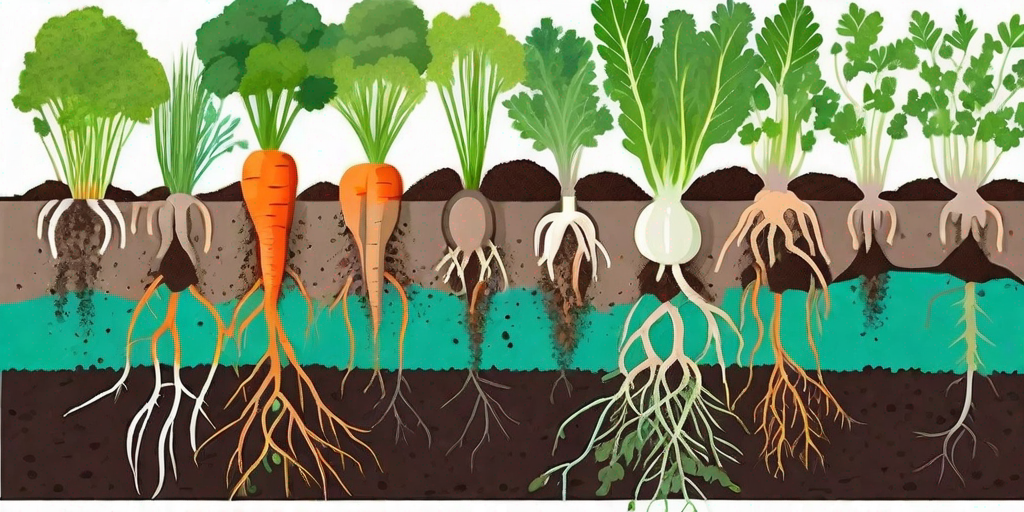
Welcome, dear reader, to the secret world of carrots. Yes, you heard right, carrots. Those crunchy, orange (mostly) delights that Bugs Bunny made famous. But did you know that the secret to growing perfect carrots lies not in the seed, the sun, or the rain, but in the soil? Yes, the humble, often overlooked soil is the unsung hero of the carrot world. So, grab your gardening gloves, your favorite spade, and let's dig deeper into the secret world of carrot cultivation.
The Importance of Soil
Soil is like the unsung hero in a blockbuster movie. It's always there, doing its job, but rarely gets the credit it deserves. But just like every hero, it has its secrets. And when it comes to growing perfect carrots, understanding these secrets can make all the difference.
Soil provides the nutrients that carrots need to grow. It's like a buffet for plants, offering a smorgasbord of minerals, nutrients, and water. But not all soil is created equal. The type of soil you have can significantly affect the growth and quality of your carrots.
Understanding Soil Types
There are three main types of soil: sandy, loamy, and clay. Each has its own characteristics and benefits. Sandy soil, for example, is great for drainage but poor in nutrients. Clay soil, on the other hand, is nutrient-rich but has poor drainage. Loamy soil is the Goldilocks of soils, offering a balance of drainage and nutrients.
For carrots, sandy or loamy soil is best. These types of soil allow the carrot roots to grow deep and straight. Clay soil can cause the carrots to become deformed or stunted. So, if you're stuck with clay soil, don't despair. There are ways to improve it, which we'll get into later.
Preparing the Soil
Now that you know the importance of soil and the best types for growing carrots, it's time to get your hands dirty. Preparing the soil is a crucial step in the carrot-growing process. It's like laying the foundation for a house. If it's done right, everything else falls into place.
First, you'll need to remove any rocks or debris from the soil. These can obstruct the growth of the carrots, causing them to become deformed. Next, you'll need to loosen the soil. Carrots prefer loose, well-draining soil. You can do this by turning the soil with a garden fork or a tiller.
Adding Nutrients
Once the soil is loose and free of debris, it's time to add some nutrients. Carrots are heavy feeders, meaning they require a lot of nutrients to grow. Adding compost or well-rotted manure can provide these nutrients. These organic materials also improve the soil structure, making it more conducive to carrot growth.
Another important nutrient for carrots is potassium. This can be added in the form of a potassium-rich fertilizer. Avoid using a fertilizer high in nitrogen, as this can cause the carrots to develop more foliage at the expense of the root.
Planting and Care
With the soil prepared, it's time to plant your carrots. Carrots are best grown from seed, sown directly into the soil. The seeds should be sown about 1/2 inch deep and 1 to 2 inches apart. After sowing, water the soil thoroughly.
As the carrots grow, they'll need regular watering. The soil should be kept moist but not waterlogged. Overwatering can lead to root rot, while underwatering can cause the carrots to split. It's a delicate balance, but with a bit of practice, you'll get the hang of it.
Weeding and Thinning
Weeds are the arch-nemesis of the carrot. They compete with the carrots for nutrients and can stunt their growth. Regular weeding is essential to keep these pesky plants at bay. But be careful not to disturb the carrot roots when weeding.
Thinning is another important part of carrot care. This involves removing some of the carrot plants to give the remaining ones more space to grow. Carrots should be thinned to about 2 to 3 inches apart. This may seem like a waste, but it's necessary for growing big, healthy carrots.
FAQs
Why are my carrots deformed?
Deformed carrots are often the result of obstacles in the soil, such as rocks or hard clumps of soil. They can also be caused by poor soil structure or overwatering. To prevent deformed carrots, prepare the soil properly and ensure it is well-draining.
Can I grow carrots in a pot?
Absolutely! Carrots can be grown in pots or containers, as long as they are deep enough. The pot should be at least 12 inches deep to allow the carrots to grow. The soil in the pot should be loose and well-draining.
When should I harvest my carrots?
Carrots can be harvested when they are of a suitable size. This is usually about 2 to 3 months after planting. However, they can be left in the ground longer if desired. The tops of the carrots will be visible above the soil when they are ready to harvest.
Conclusion
So there you have it, the secret to growing perfect carrots lies in the soil. With the right soil, proper preparation, and a bit of care, you can grow carrots that are not only delicious but also worthy of a garden show. So why not give it a try? After all, as they say, the proof of the carrot is in the eating!











